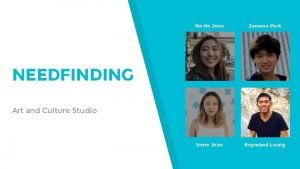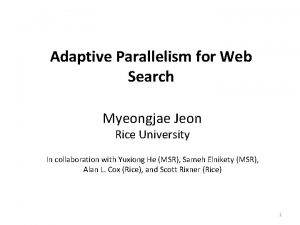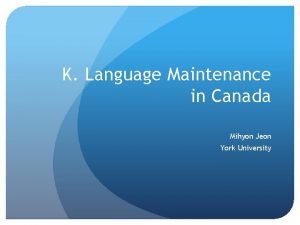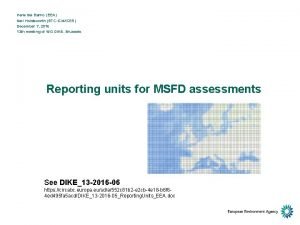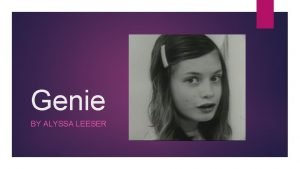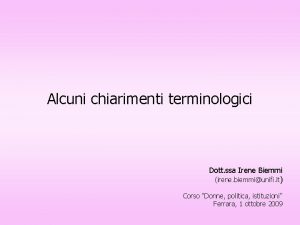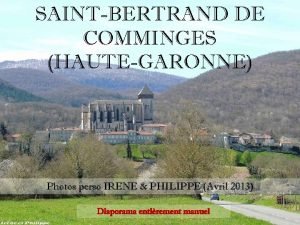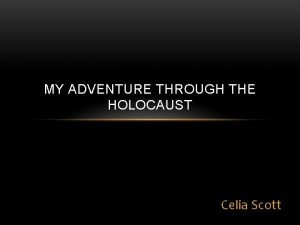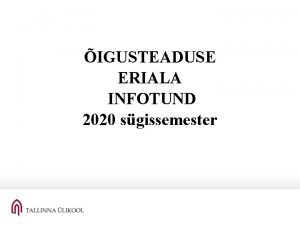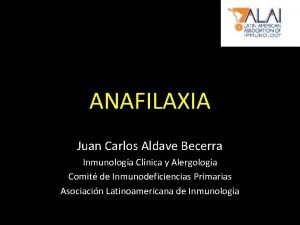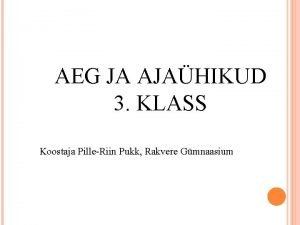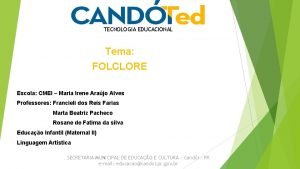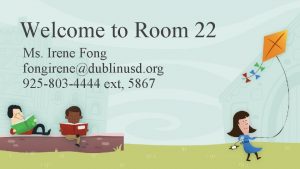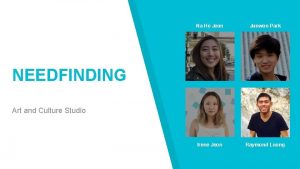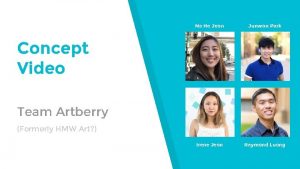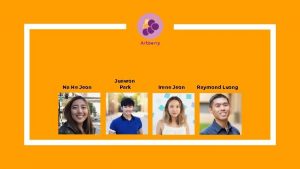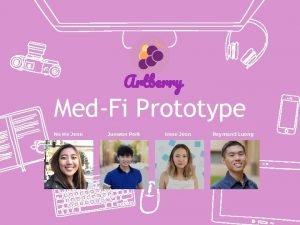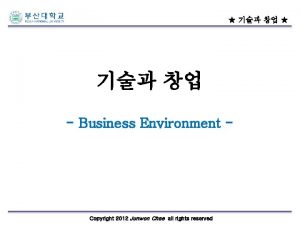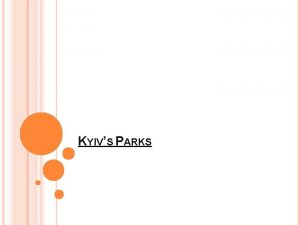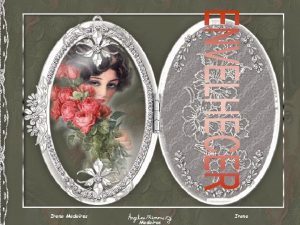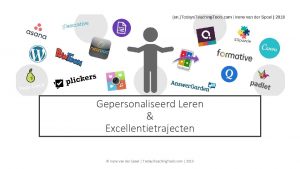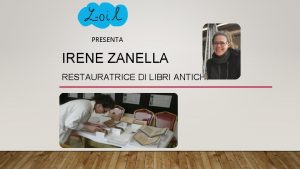Na He Jeon Junwon Park Irene Jeon Raymond


















- Slides: 18

Na He Jeon Junwon Park Irene Jeon Raymond Luong NEEDFINDING Art and Culture Studio

Domain: ART + EDUCATION 1. Art history, interpretation, and appreciation 2. Art practice and skill

1. ART HISTORY, INTERPRETATION, AND APPRECIATION

INTERVIEWEES Joseph Larnerd Aimee Shapiro Nick and Dan Art History Teaching Assistant (ARTHIST 1 B) Director of Programming and Engagement at the Anderson Collection Casual visitors at the Anderson Collection Sue, Linda, and Emily Lexi Casual visitors at Cantor Arts Center Frequent museumgoer, art history buff, EXTREME user

QUESTIONS ▸ What do you do when you engage with a piece of art at a museum? Why? ▸ What is your motivation for learning about art history? ▸ Share your favorite museum experience. What made it your favorite? ▸ Observed museum visitors engage with various pieces of art

RESULTS ● Contradiction: Joseph likes people engaging with art and having discussions on social media, but he himself doesn’t share his own thoughts - only posts photos, title, and artist ● Surprise: Lexi approaches a piece of art, opens her notebook, and writes her stream of consciousness ● Surprise: Nick and Dan have been going to museums and reading art books for over 40 years and view artwork as friends ● Tension: Linda became less interested in a piece of art after reading its description

EMPATHY MAP SAY ● “Forcefield of art” ● Want more educational value for kids ● “Haven’t used a camera since 1976” ● Need to know what I’ll be seeing DO ● No sustained looks ● Groups travel room by room, but disperse inside ● Research museum before going ● Look at piece of art, then read description, then look back ● Sneakily takes photo THINK ● Personal relationship with art ● Museum environment facilitates learning ● Community can enhance experience, but only if user wants it FEEL ● Pressure to appear knowledgeable ● Daunting and intimidated ● Serious due to nature of a museum ● Intimacy ● Inspired

NEEDS AND INSIGHTS NEED ▸ To document art experience ▸ To appear cultured ▸ To learn from other viewers INSIGHT ▸ Context is as important as the artwork itself ▸ Serious museum environments create social pressure to appear cultured

2. ART PRACTICE AND SKILL

INTERVIEWEES Stacy Savickas Katya (+ others) Christina Art Teacher at Jordan Middle School Art Student College student trying to learn art on the side

QUESTIONS ▸ Why are you learning art? What keeps you motivated? ▸ How do you best learn art? Why is that effective? ▸ Tell me about your craziest day of teaching. ▸ Observed students in classroom

RESULTS ● Surprise: Stacy thinks “lesson plans are stupid” ● Tension: Christina’s friends are not into art, which she views as a barrier to her own motivation ● Contradiction: Katya learns a lot from her peers and friends, but Christina prefers engaging with experts / those with more experience

EMPATHY MAP SAY ● “I’m more of an art facilitator” ● “Lesson plans are stupid” ● Multiple degrees of mastery ● Social media =/= platform for critique DO ● Plays You. Tube videos for class ● Hugs students ● Watches DIY videos online ● Asks teacher for feedback multiple times ● Doesn’t talk to friends about art THINK ● Art is de-stressing ● Friends don’t give honest feedback ● Art is more about the journey than the final product FEEL ● Connected ● Unmotivated due to lack of interest from friends ● Inspired by online resources ● Frustrated ● Engaged with piece on white privilege ● Proud for creating controversial art piece

NEEDS AND INSIGHTS NEED ▸ To receive honest feedback ▸ To learn from experts INSIGHT ▸ Personal connection with art enhances learning ▸ Structure and feedback increase motivation

3. SUMMARY

KEY POINTS ▸ Museum environment facilitates learning but also imposes a pressure on viewers to appear cultured. ▸ Art is a personal journey, but social and community aspects can enhance the experience if wanted. ▸ Art students crave honest feedback.

NEXT STEPS ▸ Choose one aspect of art education to focus on ▸ More interviews lined up: ▹ Kim, Student Engagement Coordinator at Cantor Arts Center ▹ SF MOMA ▹ Deanna, High School Art Teacher at Gunn

THANK YOU!
 Irene jeon
Irene jeon Myeongjae jeon
Myeongjae jeon Language attitude
Language attitude Brush mountain park
Brush mountain park Irene del barrio
Irene del barrio Genie wiley nature vs nurture
Genie wiley nature vs nurture Irene biemmi unifi
Irene biemmi unifi Irene scopelliti
Irene scopelliti Hockeyblessure behandelen
Hockeyblessure behandelen Irene philippe
Irene philippe Irene schönbein wikipedia
Irene schönbein wikipedia õis2 tlu
õis2 tlu Irene santolaya torrego
Irene santolaya torrego Irene modesto
Irene modesto Irene schönbein wikipedia
Irene schönbein wikipedia Pille pukk
Pille pukk Irene folclore
Irene folclore Santa irene planta
Santa irene planta Irene fong
Irene fong
